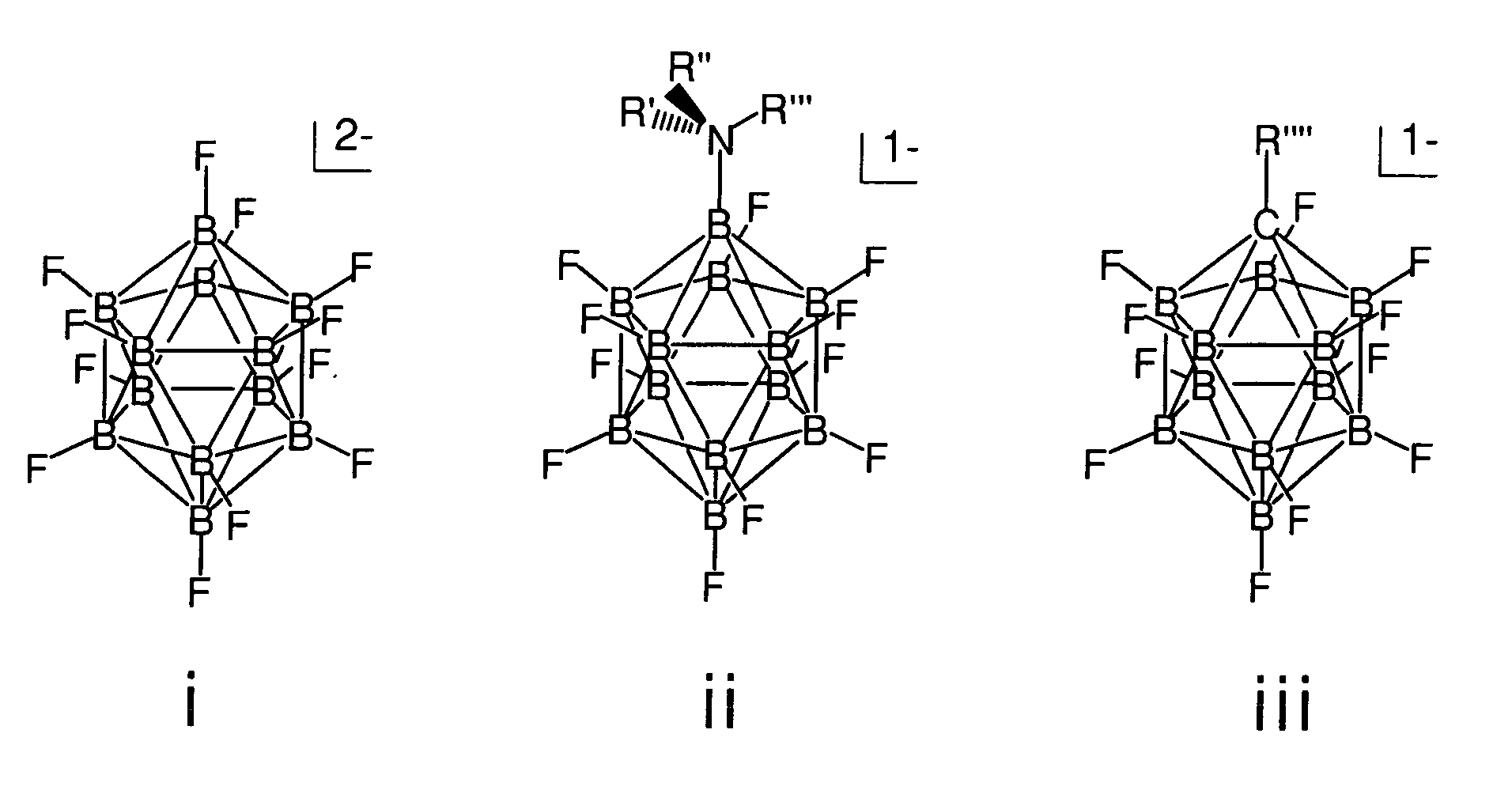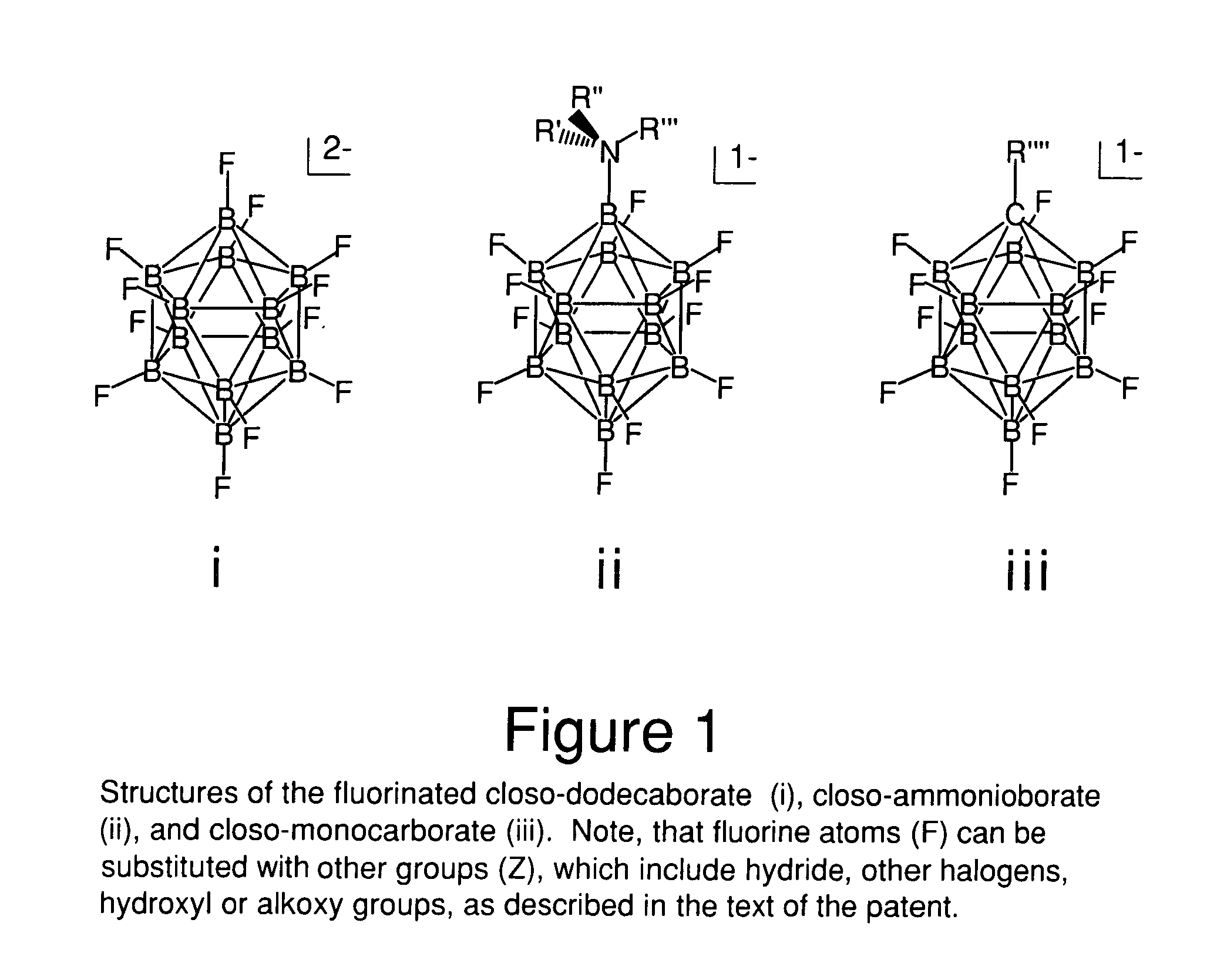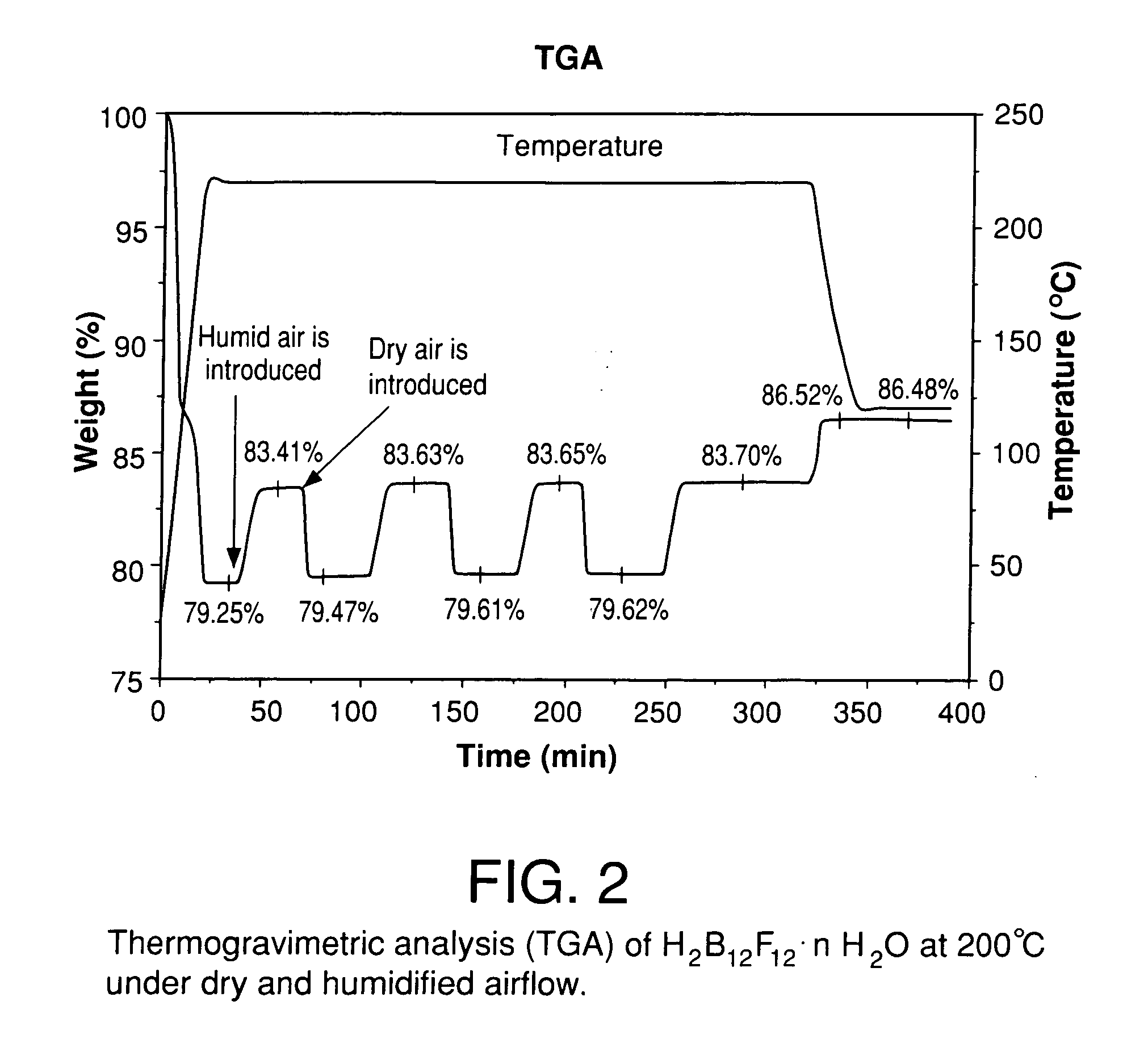Stable electrolyte counteranions for electrochemical devices
a technology of electrochemical devices and electrolyte counters, which is applied in the direction of non-aqueous electrolyte cells, non-metal conductors, conductors, etc., can solve the problems of hf can be produced on compound breakdown, oxidative stability, safety, etc., and achieves the effects of long device life, improved operation, and stable electrolyte counters
- Summary
- Abstract
- Description
- Claims
- Application Information
AI Technical Summary
Benefits of technology
Problems solved by technology
Method used
Image
Examples
example 1
Preparation of Li2B12FxH12-x, where x=10-12
[0137] A colorless slurry containing 2.96 g (11.8 mmol) K2B12H12CH3OH in 6 ml formic acid at an average Hammett acidity of Ho=−2 to −4 was fluorinated at 0 to 20° C. When 100% of the desired F2 (142 mmol) was added as a mixture of 10% F2 / 10% O2 / 80% N2, a colorless solution remained. Further fluorination (3%) at 30° C. resulted in precipitation of solid from solution. Solvents were evacuated overnight, leaving 5.1 g of a colorless, friable solid. Analysis of this crude product by 19F NMR revealed primarily B12F10H22− (60%), B12F11H2− (35%), and B12F122− (5%). The crude reaction product was dissolved in water and the pH of the solution adjusted to between 4-6 with triethylamine and triethylamine hydrochloride. The precipitated product was filtered, dried, and resuspended in water. Two equivalents of lithium hydroxide monohydrate were added to the slurry and the resulting triethylamine evacuated. Additional lithium hydroxide was added until t...
example 2
Preparation of [Et3NH]2B12FxH12-x (x=10, 11, or 12)
[0138] A slurry of 2.01 g K2B12H12CH3OH in 10 g glacial acetic acid was fluorinated at 20° C. with 10% F2 / 10% O2 / 80% N2. A total of 116 mmol F2 was added (22% excess). The slurry remained colorless throughout the fluorination and while its viscosity, decreased; complete dissolution of the solid was never observed. At the completion of the fluorination the product, slurry gave a negative iodide test for oxidizer. Solvents were then evacuated and the crude product dissolved in water. Triethylammonium hydrochloride (240 mmol) was added along with enough triethylamine to bring the solution pH up to 5. The product was filtered, washed with water and dried. 3.2 g (65% yield) of fluoroborate salts were isolated.19F NMR analysis showed B12F10H22− (7%), B12F11H2− (18%), and B12F122− (75%) with only traces of hydroxy-substituted impurities. The crude reaction product was dissolved in water and the pH of the solution adjusted to between 4-6 w...
example 3
Fluorination of K2B12H12 with Fluorine in Formic Acid (15% Loading; O2 Added)
[0139] In this example, a colorless slurry containing 1.8 g (7.2 mmol) K2B12H12CH3OH in 10 ml formic acid was fluorinated at 0 to 10° C. as described in example 1. A total of 108 mmol F2 (25% excess) was added as 10% F2 / 10% O2 / 80% N2. Over the course of the fluorination solids completely dissolved leaving a colorless, homogeneous solution at the completion of the fluorination. Analysis of the crude product solution by 19F NMR revealed primarily B12F11H2− (35%), and B12F122− (60%) and approximately 5% of the monohydroxy impurity B12F11OH. No dimer impurity was observed. Isolation of the product through the triethylammonium salt as above removed impurities and gave the above fluorinated borate cluster products in 80% yield.
PUM
 Login to View More
Login to View More Abstract
Description
Claims
Application Information
 Login to View More
Login to View More - R&D
- Intellectual Property
- Life Sciences
- Materials
- Tech Scout
- Unparalleled Data Quality
- Higher Quality Content
- 60% Fewer Hallucinations
Browse by: Latest US Patents, China's latest patents, Technical Efficacy Thesaurus, Application Domain, Technology Topic, Popular Technical Reports.
© 2025 PatSnap. All rights reserved.Legal|Privacy policy|Modern Slavery Act Transparency Statement|Sitemap|About US| Contact US: help@patsnap.com



